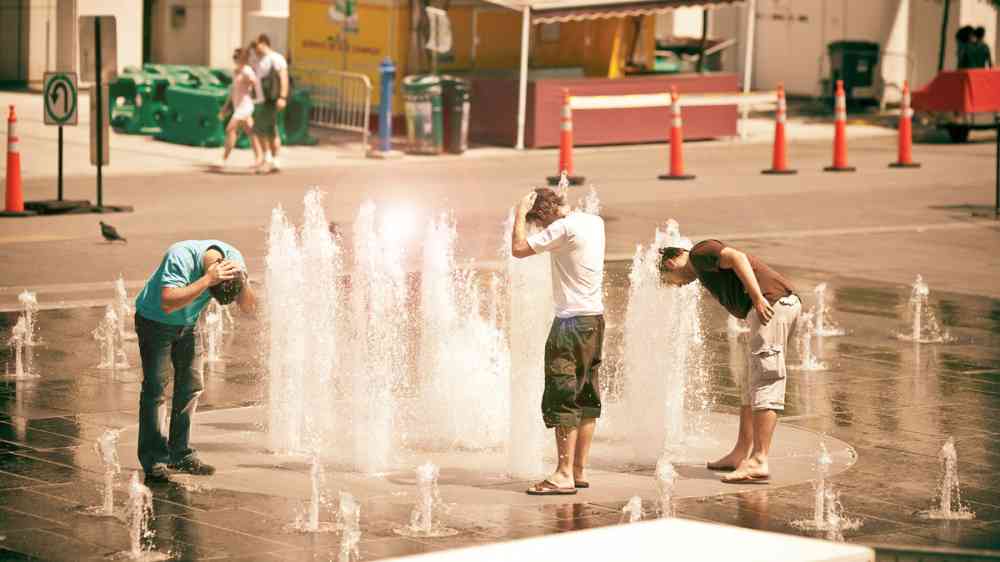Time to say goodbye to “natural” disasters

One can reasonably argue that there is no such thing as a natural disaster despite the widespread use of the term in the media, by UN agencies, NGOs and many others.
Disasters result when a natural or man-made hazard affects a human settlement which is not appropriately resourced or organized to withstand the impact, and whose population is vulnerable because of poverty, exclusion or socially disadvantaged in some way.
A natural hazard becomes a disaster when it combines with exposure and vulnerability to cause loss of life, hurt and injury to people, along with economic loss.
If a storm peters out in the middle of the Atlantic or a flash flood courses through an empty desert, the result is not a disaster. It’s just weather.
Efforts to replace the term “natural disasters” have been underway since the end of the International Decade for Natural Disaster Reduction in the ‘90s.
If such a decade were launched today, we would call it the International Decade for Disaster Risk Reduction.
Over the last twenty years thinking about how to reduce disaster losses has greatly expanded beyond a simple focus on disaster management to consideration of all the other elements that contribute to increasing the risk of loss of life, injury, damage to critical infrastructure and economic losses when disaster strikes.
Most of this risk accumulating in society is because of weak disaster risk governance which amounts to a lack of risk-informed planning and public engagement along with failure to respond to scientific evidence and clear warning signals about pending threats notably global warming and the climate emergency.
Unfortunately, there are many risks in our contemporary world, including poverty and inequality, environmental degradation, rapid and unplanned urbanization, weak building codes, population growth in hazard-exposed areas and the spread of zoonotic diseases such as COVID-19.
What COVID-19 has laid bare is that all these multiple risks are connected, and their impacts are cascading.
One of the four priorities for action in the global plan to reduce disaster losses, the Sendai Framework for Disaster Risk Reduction 2015-2030, is “Strengthening disaster risk governance to manage disaster risk.”
According to the Sendai Framework, disaster risk governance requires “Clear vision, plans, competence, guidance and coordination within and across sectors as well as participation of relevant stakeholders.”
Without strong disaster risk governance, it is difficult to put in place the planning and coordination necessary to address in a holistic and coherent way the key drivers of disaster risk.
The central point of the #NoNaturalDisasters Campaign is that “using ‘natural’ to describe disasters can give people the impression that disasters are inevitable, and that human agency can do little to prevent or mitigate their impacts.
UNDRR’s most recent Global Assessment Report on Disaster Risk Reduction – GAR2019 – points out that the world is reaching the point where we may no longer have the ability to mitigate or repair impacts from cascading and systemic risk, particularly in relation to the effects of global warming in a world currently on course for catastrophic temperature increase of 3˚C or more.
How much can the shortcomings in disaster risk governance be attributed to the subliminal message sent by the continuing use of the term “natural disasters”?
In a recent survey conducted by the #NoNaturalDisasters Campaign, 97% of the 122 respondents worked in organizations with a specific focus on disasters or humanitarian emergencies. Despite their expertise, 92% of respondents reported hearing colleagues use the term “natural disaster” in the workplace while 60% stated that these organizations include the term in their literature and in job titles.
I confess to having used the term ‘natural disasters’ instead of ‘natural hazards’ without thinking carefully. The expression is used repeatedly in the media to the point where it has become somewhat engrained in our vocabulary when talking about disasters.
This is a good year to raise awareness of the difference between a natural hazard and a so-called “natural disaster” and to change public perceptions and attitudes in a way that enhances understanding of disaster risk.
This is the year when UN Member States are scheduled to have in place national and local disaster risk reduction strategies to meet a key target of the Sendai Framework. Good disaster risk governance will be the focus of this year’s International Day for Disaster Risk Reduction on October 13.
This week sees the launch of a new phase in the #NoNaturalDisasters Campaign which seeks to make use of the term ‘natural disasters’ redundant in the workplace.
Editors' recommendations
- #NoNaturalDisasters - Changing the discourse of disaster reporting
- Why natural disasters aren't all that natural
- Does nature play disaster games? Disasters are not natural; our choices cause them.
- Events are natural, disasters are not: How lessons learned from previous events can help businesses to become more resilient
- A dilemma of language: “Natural Disasters” in academic literature
- #NoNaturalDisasters